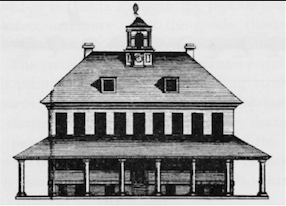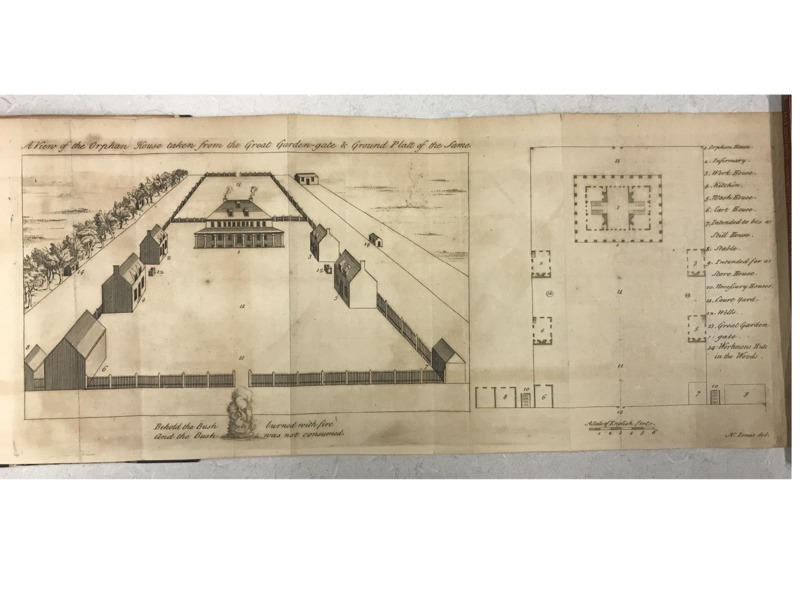Perspective View and Blueprint for the Orphan House
The map of Bethesda, "A View of the Orphan House Taken from the Great Garden-gate & Ground Platt of the Same" is a plan of the manifestation of George Whitefield's grand designs for a charitable, religious outlet for godly influence in the 1700's in Georgia. The saying "Behold the Bush burned with fire And the Bush was not consumed" that is written under the perspective map sheds light on Whitefield's purpose in establishing the Orphan house – to provide a beacon of God's light and good faith for those who are less fortunate in the Georgia community. Whitefield found this calling while he "traveled over the colony, noting the existing conditions, being especially impressed with the large numbers of orphans and their neglected condition" and he vowed to use his skills and avocation as a preacher to fund and establish the orphan house (Surrency 88). Whitefield describes the grounds and his plans for the housing and facilities that will soon come to support many children, orphans and poor people's children alike, in education and religious instruction under charitable care and instruction. The Orphan House is the largest building in dimension, placed at the head of the courtyard, followed in size by the auxiliary buildings necessary to support its inhabitants, further proof of the planning and support that Whitefield intends to provide for his future wards. His vision is evident in the care and consideration that is taken with this map – a blueprint for great religious work and charitable achievement in a colony experiencing a time of desperate need for such an establishment.
Surrency, Erwin C. “Whitefield, Habersham, and the Bethesda Orphanage.” The Georgia Historical Quarterly, vol. 34, no. 2, 1950, pp. 87–105. JSTOR. Web.

